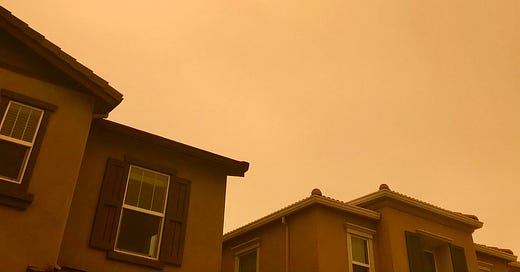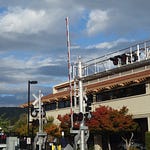About This Episode
Welcome to an extra special insurance edition of Housing After Dark. I’m your host Alex Schafran. One of the goals of this podcast is to shine light on the full extent of our housing system, pushing beyond the issues that folks think of as “housing.” Today we dig into one of the most important ingredients in housing: insurance.
Joining me today are two people from very different corners of the insurance and housing question: Justin Dove, a longtime insurance broker and Area Executive Vice President at Gallagher, and Zac Taylor, Assistant Professor at TU Delft in the Netherlands and a scholar of climate finance who has focused extensively on insurance. We dig into California’s insurance crisis, how it impacts housing production and not just existing homes, and what the public sector and industry need to do to ensure that our housing system has the insurance it needs to operate in a challenging climate.
This Episode’s Guests
Interview Transcript
Alex Schafran: Justin Dove, Zac Taylor, welcome to Housing After Dark. Thank you so much for being here. So, Justin, let's start with the Housing After Dark tradition of people telling us a little bit about themselves, in particular, how you got into the insurance industry that specifically works on housing.
Justin Dove: No one grows up wanting to be in the insurance industry, they somehow fall into it. My case is ultimately that, but I am a legacy in the insurance industry. My grandfather was an engineer by trade and worked for insurance companies on the underwriting side. My mother has been in the insurance industry for over 35 years. They both wanted to get me into the insurance industry. I fought it often through high school and college. I ultimately did an internship at the company I am to this day. It seemed to be a fit and the rest is history. So we now have a very engaged corner of the Thanksgiving dinner table, the three of us, much to the demise of the rest of our family.
Alex Schafran: It’s interesting. This is a theme that just came up in the recent podcast recording I did with Gloria Bruce, the former director of East Bay Housing Organizations about her circuitous route ns my circuitous route getting into our corners of the housing industry. It sounds like you experienced a similar theme. I don't think a lot of people grow up necessarily wanting to or even seeing a lot of the important professions that go into making housing and I would include insurance as one of them. But I'm glad you're here. We the people of California are glad you're still in California selling insurance because a lot of companies are leaving.
To start, let’s help folks understand a bit more about the California insurance crisis and what's going on. So insurance companies are leaving. Why are they leaving? And what is the biggest challenge for insurance? Let’s start on the homeowners or the building owners.
Justin Dove: It’s a dynamic and fluid situation that's really been building up for more than a decade, I would say specifically in California. The acceleration of the challenges that consumers are facing in California has really been happening over the last 24 to 36 months. We find ourselves in a position where it's very difficult for consumers (homeowners but also commercial businesses), to buy property liability and other insurance policies in California. That's for a variety of reasons.
One of the main factors is the weather. The weather we are experiencing now is different than it historically has been. We are seeing a higher frequency of severe events occurring. In the insurance industry we evaluate exposure to the frequency by which events or occurrences, claims, losses, etc. happen and how big/severe they are.
What we're unfortunately encountering in the market is a frequency of severity on a track that we have not historically seen. It's manifested in California most prominently in the news about wildfire, but there's also flood, extreme rain. and wind. The weather is just behaving differently than it historically has been.
So what I would say to the listeners is that we are in a very interconnected marketplace (the insurance market, it is a market). Consumers that are buying insurance in California are also very much influenced by the fact that there's adverse weather with winter freeze in Texas or hurricanes in Florida, tornadoes throughout the country, or wind and hail in Colorado. While there are things and weather that are happening in California, the insurers are very influenced by those same types of events that are happening elsewhere in the country and around the world.
The market has historically tried to diversify geographically so they could sustain losses from hurricanes in Florida by, say, writing property insurance in California. What we're seeing is unfortunately, there are weather events that are causing damage and losses in Florida and the same year that they're having wildfires in California. So the insurers are struggling to maintain profitability.
The reaction from insurers is to do a few things. One, they can raise the price. Two, they can change the policy terms and conditions (they can choose not to cover something or cover something a little less). Or they can really take their ball and go home. What we're seeing certainly in the homeowners insurance market is a lot of companies are taking their ball and going home.
I don't personally believe that that is a permanent thing. I think it is a temporary period where insurers need to refile new rating methodologies and pricing models. They have to file new policy forms. They're going to have to retool to provide insurance profitably. Unfortunately, in California, many insurers have not done so profitably.
For the listeners, that same concept is happening around the country which is why insurance pricing challenges exist for houses all across the country. It’s not just weather related, it's the cost of everything, the cost of a slip and fall, claim, lawsuit, litigation. All of these things are escalating and the cost of addressing them and that time duration to go through them. All of those things combined are putting pressure on pricing and what we call capacity.
Capacity is an insurers’ willingness to provide insurance limits. So when we as a consumer want to buy insurance we need limits, we need their capacity. And what's happening right now is insurers' willingness to provide that capacity is constrained. And consumers feel that all over the place in many different ways at the moment.
Alex Schafran: Thank you for what is a really clear explanation. I want to get into some of the politics of this, some of the solutions, and even some of the reasons why you and Arthur Gallagher are remaining in California. But before we get there, I want to make sure we get to the complexity of the problem. Sadly, insuring existing buildings is only a piece of our challenge in housing.
One of things that I've learned as I've dug more into our housing production challenges and the housing industry is just how prevalent and important insurance is as a key ingredient in making housing. The more I talk to developers, architects, and modular builders, the more I learn that they are also having crises. Can you explain a little bit about the role that insurance plays in the production of housing? Are the problems the same? Is it also about the weather? I know issues like litigation, for instance. What's going on in our housing production system? And why is insurance so important to it?
Justin Dove: It faces a lot of similar challenges, but different ones as well. Especially more specifically to the nature of construction, I think what's important for listeners to recognize is that at its core insurance is a mechanism of a risk transfer. Parties will enter into a contract or a business relationship, a joint venture, a business will endeavor to do something (in this case, build housing), and that poses risk.
The stakeholders will assess the risk and in some cases will take some risk. But then some of the risk isn't tolerable, and it may not be tolerable to lenders or investors, tax credit investors, cities, counties, municipalities, funding sources, federal stakeholders, people in the community, the individual organizations themselves, whether it's owner developer or contractor, subcontractor. Everyone has a different interest in the development and they all have different approaches to risk. They have different balance sheets, financial capacities. there's a variety of factors that come into play and really collide on a real estate development.
Ultimately, a large portion of risk is desired to be transferred out of those parties' hands and to insurance companies. Insurance companies will evaluate the risk and the risk is manifested as property insurance risks (physical damage to buildings, fire, water, etc.), liability risks (injuries or damage that occurred to other parties), or financial or employee risks (workers comp). Consumers will transfer that risk to insurance companies. That at its core is the insurance transaction.
Now, what is happening with real estate development and housing production? Why is it becoming more challenging? There's no doubt that the weather is playing a factor. When wildfires occur, when the wind blows, when the heavy rains come, we are seeing projects get physically damaged during the course of production. There was also a spate of arson related events throughout the Bay Area from 2018 to 2020 that also caused a lot of havoc in the insurance market.
But to your earlier comment, once projects are built there can be claims that arise out of the work, there can be defects in the work or design, that can cause financial problems. The buildings that may incur damage and the owners may have to move residents out or replace the interiors of the units, the windows, etc. All of these things play a role. The ultimate influencing factor related to housing production is that the cost of securing that insurance is really rising. It's rising beyond just weather reasons.
The sheer cost that we are seeing these projects take to build as a cost per unit basis is extraordinary. Much of the new housing production, certainly what we're seeing in affordable housing, is wood frame construction. When it is physically damaged, the cost of replacing it comes at a higher cost than it ever did because of the cost of materials, labor, escalation, etc. all the challenges that our housers face on the front end to actually just get the deal to go. If they do have a problem and it gets damaged it's costing more than it ever has to fix. That goes into the evaluation of the risk and how much an insurance company has to charge by way of premium to take on that risk.
Some of the geographies that houses are building in are challenging. Some of these challenges are due to their physical location (e.g., near a fire zone or some other hazard) but also from crime. Some of the urban settings housing is being built in pose real challenges for insurers. Insurers, particularly for wood frame construction, are extremely concerned about certain zip codes, and people getting into the sites maybe attempting to steal materials but inadvertently or unintentionally causing other damage to the building or structure or even causing a fire and burning it down. That is priced into the risk transfer.
Ultimately, insurers are still willing to take on these risks which are risky for the consumer. The challenge is their evaluation of that risk. They are assigning more weight to the risk than they ever have for some of these things I've mentioned and the price of the premium is getting very challenging to sustain. I'll put particular emphasis on wood frame construction. It's very expensive and there are ancillary costs that often come with providing that insurance during the course of construction where insurers want big tall fencing, security cameras, security guards—they want a variety of elements to safeguard the project. Those things come at a high cost.
Our housers are struggling with this new reality. Insurance was historically a relatively manageable cost as a percentage of the work, but is now a very substantial cost as a percentage of the work which must be accounted for very early on in the development cycle. It has to be understood and managed because it is escalating, and it is impacting the ability for projects to go.
It is definitely impacting the overall development cost of producing housing without question.
Alex Schafran: It has been a fascinating journey for me to learn from developers/architects. I have a story of an architect whose lawyers would not let him design a condominium project because the threat of litigation from construction defects was so high that his essentially professional insurance policy couldn't cover it. Or modular developers who ran into both weather related damage to the boxes that they had and crime related damage due to vandalism. Both of the things that you talked about, the combination of human created climate change and human created human change making it difficult and not just more expensive.
I've been doing some work around construction defect laws and programs in the state of California. I think there was a study from Denver, from about a decade ago (so this is very old) that was that construction defect issues were adding at least $15,000 per unit in cost. It seems also these are types of costs that can escalate rapidly in the middle of a project if things change.
It’s hard to emphasize enough, at least for me, how important insurance is to our production questions, and how a really narrow focus only on land use laws as the primary barrier for housing production really blinds folks to the kind of more complex reality of what it is to build housing in California and the United States. There are so many other costs and risks, besides the obvious clear risk of having your project dragged down through bureaucracy or through political opposition.
On that note of risk, I think this a really good point to bring in Zac Taylor, because this relates to some of your backstory of how you went from an urban geographer to an urban geographer who focuses a lot on insurance and climate. Tell us about how you got to housing and how you got to insurance?
Zac Taylor: My journey to insurance is somewhat accidental, it’s coincidental. About 10 years ago when my academic career started I started off with this hunch that our housing finance system was going to have some problems accommodating climate change, to say the least.
I grew up in Florida with hurricanes in a coastal environment, always with a deep appreciation of how ecologically fragile the place is, but also with a sense of how important housing and real estate is to the working of Florida. Famous historians have said that Florida's main product is itself. It's a real estate state. It's all about the Florida experience—sand and sun and sea. With that comes all sorts of risks.
At the same time, I was very much a child of the global financial crisis in the housing crisis, which was really formative for me being on the frontlines of experiencing foreclosure, and seeing the impacts that had on communities. Being tuned into this issue, I set out to try to understand where these issues came together on the ground in Florida. I thought my study was going to be predominantly with urban planners and real estate developers and alike and mostly focused on climate adaptation programs. Very quickly it became apparent that insurance and particularly reinsurance were seen as a sort of keystone of Florida's way of dealing with risk in the housing system, but also Florida's future.
I can remember one CEO of a major building company in the state telling me, “You know, we can have all of the resilience plans we want in the world, but at the end of the day, it's reinsurers, that are going to determine what gets done in the state, and whether or not the state has a future.” And I always probed folks like this figure and asked: “What do you mean? Why is that? What are the vulnerabilities?” I get a lot of good answers, but generally speaking, reinsurance (that's insurance for insurance companies), was really a black box to folks.
What were the issues happening in the sector? Why was it that they were so important to the housing system, but also local government, fiscal capacity, employment bases, etc. These kinds of connections weren't really apparent to people, they were often implicit. Some of the dynamics that Justin mentioned that are happening and playing globally, were off the radar or not quite in view for folks.
That rabbit hole kind of opened up and I jumped in. Ever since then I've been looking at various ways in which the finance system, and particularly the housing finance system, is responding to the conversation around climate risk. That includes developments in the insurance sector, the reinsurance sector, debates about financial innovation and what they mean for the housing system, and for housing affordability in particular. But also questions about financial regulation, real estate investments, pension funds, really trying to understand how our entire financial system is responding to these challenges in the built environment, and what it ultimately means for places.
Alex Schafran: Maybe we can dig into this issue of reinsurance if this is the most complex and weediest piece of today's conversation. Zac, can you just give us a little bit of a background on reinsurance? And then Justin, I'd also love to hear your experience and to what degree you in the insurance industry are engaged with reinsurance. Reinsurance is the insurance that insurance companies have on their insurance policies, correct?
Zac Taylor: Yep. And just to make it more complicated, reinsurers even buy insurance. In essence, insurance companies have a few different ways of dealing with the risks that they take on when they sell you and me a policy and they're regulated. So they save a little bit of the money they collect from you and me, they put it in the bank account, in case they have any claims to pay out, they invest a little bit of it and that's how they make their money, and then they buy their own insurance to pass on the risk.
That’s something that happens globally. Reinsurance markets are really international. There are major centers like London, Germany, Switzerland, Singapore, all over the world. The basic premise here is that companies want to diversify risk. The idea is that if every insurer in say California and Florida can pass on 20%, 30%, 40%, or sometimes 50% of the risk in the form of the premium they collect from you and me onward, this stabilizes their financial position and it spreads the risk all across the globe.
In my PhD analysis, I looked into the books of a lot of Florida insurers that specialize in homeowners insurance. We see that it's quite common for an insurer to buy reinsurance from 10 or 20, sometimes more, different companies. And the idea here, again, is to just diversify.
The real challenge in that space is to what extent can you diversify. What is the limit at the table, so to speak? That’s one of the drivers of the problems that Florida has faced, which are echoed in California. Our local insurers need to buy that reinsurance but there's only so much capacity for reinsurers. They can only take on so much risk from Florida or from California, before they get uncomfortable and before the risk of losses becomes too high and unsustainable.
There's a lot of ways of dealing with that. One of the big focal points of my research has been on financial innovation. There’s something called insurance linked securitization, that's basically a way of turning insurance risk into an asset class and to bring in pension funds and sometimes hedge funds to bring other types of capital to the table as a way of trying to further spread the risk around. There are other strategies that have to do with some of the things that Justin talked about like raising costs, limiting their exposure. There are a lot of conversations about physically dealing with risks by retrofitting buildings, and so on.
A lot of what happens and a lot of what's important for understanding this conversation goes on in London, in Zurich, in Hong Kong, and Singapore where reinsurers are based. That’s where a lot of the overall financial architecture of the system is coordinated and managed. That's an important but hard to conceptualize part of the puzzle. A lot of the decisions about the future of insurability in Oakland, or in Miami Beach are being made across the Atlantic or across the Pacific.
Alex Schafran: So Justin, from your end in the insurance industry, how does this reinsurance operate for you? We've talked a little bit about all the risk that you're seeing on the ground in Oakland, in Miami Beach, and in various places. How are you all engaging with the financial system, this global reinsurance system. How has that changed some of the calculus on the ground for you all over the last number of years?
Justin Dove: It’s had a major impact. To provide context for the listeners, this is the interconnectivity of the market that the average consumer is not considering when they go to buy their insurance every year. I'll give examples specifically for housers. Large insurance companies (the big ones like Travelers, Liberty Mutual, Chubbs, AIG) that have historically insured housers and large property owners throughout the country would historically have provided full capacity that housers need for their portfolio. If they had $100 million of buildings, they would provide $100 million of insurance.
Now with the rise of data, analytics and even AI which is making its entry into the insurance industry, and has already started to have an interesting impact. As the weather has changed, and as losses have become more severe, insurance companies are not wanting to provide that full amount of capacity. They're concerned about exposure to their balance sheets. If they're providing that much insurance ($100 million of insurance) to thousands and thousands of real estate owners across the country when a large weather event goes through (hurricane, fire, etc.), it poses balance sheet threats to their organization. What we’re seeing with large insurers is their current willingness and capability to provide capacity is much reduced than historical trends.
We're seeing in California, large insurers that might have provided $50 or $100 million of insurance across a portfolio, or to any one building, providing $5 or $10 million. The reason is that is the only amount that they are willing to take on their balance sheet. They will give you say, $25, or $50, or $100 million, but it's not coming from them. It's coming from reinsurers. The implication of the pricing is substantial.
If a large insurer used to give you $100 million, and didn't have to go offset that or transfer some of that capacity to a reinsurer, the price is what they rated it at. But if they're going to give you now the same $100 million, but they're not going to take that risk, they're only going to take $5 million of it, they essentially have to go source their own insurance for the other $95 million. That's going to come at a cost. They're going to ultimately have to pass that cost down to the consumer.
What consumers are facing just at the business level is “Do I just take my $5 million from this insurance company and go try on my own to go buy the rest of it to get to the same 100 million? Or do I just stomach the very difficult increase costs that the same company will give me for $100 million, and they're just buying the reinsurance on the back end?” This has become a huge issue for consumers on a larger scale.
While that is occuring for large housers, the same thing is true for smaller businesses and smaller consumers. Insurance companies generally desire to take on less risk. The implication of them taking more than they would desire is essentially them having to go secure their own insurance (which is reinsurance) and just pass that net cost down to the consumer. That's become very difficult to sustain for consumers, and is a huge reason why the cost of insurance is going up for consumers. It's mainly because the industry on any one account, on any one risk, is not willing to take as much risk as they historically have.
Alex Schafran: I think you could do an entire podcast series on housing and risk or just risk and the current world we just live in. In many ways, it's a subject that more and more of us are thinking about even if we hadn't thought about it before.
So I want to get into this issue of risk and the role of the government, or the state, which to use the academic term, but in this case I also mean the state of Florida and the state of California. But before we dive into that, I want to make sure that we focus a little bit on some of what you both mentioned, which is one of the techniques that people are using in reinsurance, which is this exploration of other financial products. You mentioned insurance, linked securities. I'm suddenly having images of AIG in 2008 or 2009.
Zac, or Justin, can either you explain how this risk is working in terms of connections to the larger financial markets to hedge funds or other financial tools? Are we exchanging one form of risk for another? Are these types of actions that could lead us towards another type of bubble and another type of crash? I also know that historically, in the production of affordable housing, insurance was a really critical source in the postwar era of that long term patient, relatively low return, relatively low risk capital that underpins all housing. All good housing, in my opinion, comes from having cheap patient debt that is secure. Are there things that we should be nervous about in terms of how the insurance is connected to these larger financial markets? Are there positive things that are coming out or could come out of these rearrangements?
Zac Taylor: I think it's a good question. I remember when I was finishing up this research, the first thing people would think is it sounds a lot like mortgage backed securitization. The logic is not so different in terms of the fundamental design. But there's all sorts of forms of securitization that exist. One really important thing to notice is the magnitude of the mortgage backed securities market is so much larger relative to the insurance securities and collateralized reinsurance market. There's really no comparison in terms of scale which changes the systemic nature of the conversation.
A lot of this market is still invested in Florida so it might have ramifications for places like Florida, maybe California or Australia. There are a couple of markets in the world that are more intertwined with insurance linked securities markets than others so there could be some particularly acute tensions. For me, the issue is less one of a risk of large scale financial instability because of the risk transfer markets and more one of the feedback loops that could come with an unmanaged devaluation of assets in which insurance affordability is a factor, one of many. That’s where there are links to mortgage markets, links to municipal debt markets.
The destabilization of property markets, in part because people can't afford insurance and in the event of some kind of disorderly repricing of real estate assets, might be a little bit more concerning at a larger level, particularly for places like Florida that really do depend on access to reinsurance capital to maintain the status quo in their property markets. The capital costs and availability issues in the reinsurance worlds are already feeding back into higher costs of living. I wouldn't be surprised if that does change the business case, the premise, the possibility of homeownership in certain contexts.
It’s a different puzzle with different mechanisms. But I wouldn't let the familiarity of the sounding name of the financial mechanism be the thing that's the driver.
Alex Schafran: Justin, anything that you want to add about what you're seeing on that financial market side?
Justin Dove: I would just say to the average consumer, we need a robust insurance market that does have profitability. I think the frustrating experience that consumers have is seeing their prices rise. The reaction is, “Well, this is egregious and these insurance companies are making money hand over fist.” Not to be an insurance company defender, because by no means am I, I'm a broker that represents consumers, but recently in the last three/four years, they have not been making money and that's not good for the consumer market.
Some combination of insurers being able to take reasonable risk, transfer some of their risks at a reasonable cost, make some degree of investment income, utilize some of these other financial mechanisms to be sustainable, at a reasonable profit (not an egregious profit), they need to have access to some of these tools otherwise there isn't going to be an insurance marketplace. Capital and investment is not going to go into the insurance marketplace if investors cannot make a return. We need the market to have a reasonable return. Otherwise, insurers will go away. Investment in the market will dry up because investors and capital are always going to seek some degree of return. That really is a struggle that is happening in the marketplace.
Alex Schafran: Let's take it home with I think the key question that a lot of listeners will want to hear about which is what do the states do? What do policymakers do? Maybe we can start by explaining the role that the state of Florida and the state of California play in the insurance industry? I earthquake insurance was one of the first roles that California got into. I know from Zac that Hurricane Andrew led the state of Florida into the insurance business. Can you both explain how the states are involved right now and how they can get involved in new ways?
Zac Taylor: This is a little bit of an academic framing, but when we talk about risk and how to deal with risk regarding the role of the state, I try to frame this as a risk puzzle. There’s a transfer that Justin talked about with insurance. And then there’s risk mitigation, which is materially doing things with risk. I'm talking about land use planning, and building codes and all that.
I just want to posit before we dive into the role of the state and insurance markets. When we talk about the role of the state of insurance, it can also be helpful to think about it conceptually. What is the role of the state in this overall big puzzle? Spoiler alert, I don't think we're being as smart as we could be about combining the risk transfer and risk mitigation view. An integrated view of risk and the role of different types of state intervention in managing that puzzle.
To answer your question directly. There are all sorts of different ways in which states regulate insurance markets. Unlike other financial markets, insurance is regulated at the state level primarily, which means you get a lot of variety between states. There are a couple of common things that do exist. To go back to the example you made of earthquake insurance, Alex, one of the key roles the state often plays is an insurer of last resort role, a residual insurer.
In Florida, we have something called Florida Citizens. This offers policies to consumers that can't find coverage in the private market. This is kind of a key way in which states deal with the limits of private insurance markets. States do other things, too. In Florida, there's a state reinsurer, the Florida Hurricane Catastrophe Fund. Any private insurer doing business in the state has to buy placement from the state for the reinsurance. The state has a guarantee fund in case an insurer goes out of business. The state regulates insurance policies, the terms, the costs, in all sorts of ways. In Florida, the state also uses the state pension to invest in insurance products that I mentioned. So the state of Florida also invests in insurance linked securities.
There are all sorts of different mechanisms the state uses, from an institutional and regulatory perspective to try to stabilize the market. These change a lot over time. They're often politically contested in complex ways. It's an interesting puzzle and balancing act. I remember one Florida state insurance regulator describing it to me as these institutions acting like accordions. They expand and contract as the market conditions change. So the state steps in and it steps out, and tries to create the conditions for a stable market but is often navigating very conflicting impulses between profitability for insurers and affordability for consumers and those bring out all sorts of different dynamics. So that's a kind of general overview and example from Florida. I think some of the parameters are generally the same in California.
Alex Schafran: Justin, can you give us some background on how it works in California?
Justin Dove: There are other mechanisms similar to what Zac described in Florida that California does use, the most prevalent is called the California FAIR Plan, which is essentially a property insurer of last resort that will write property insurance in high hazard fire zones. There historically had been a very low limit of insurance that the FAIR plan could offer and so consumers struggled with the offering of the FAIR plan. That has recently been changed and the FAIR plan now offers a much more substantial property insurance limit which is great for consumers.
It's not without its challenges, however. The product is designed for fire. So you can get that but you don't get other elements that are traditionally in a property insurance policy. There isn't a great holistic solution yet in California for property insurance and high risk fire areas. Certainly California is trying to make that FAIR Plan product more robust.
As a consumer, as a California taxpayer, I get concerned with expanding state and federal resources to provide insurance capacity. I struggle with consumers really relying on the government for those types of resources. I'll give you an example of why.
At the federal level there is something called the National Flood Insurance Program (NFIP). That was born many years ago because consumers and businesses were struggling to get flood insurance in high risk areas. The National Flood Insurance Program was born to provide a facility to provide those consumers some degree of flood insurance and that program is called the NFIP. The NFIP essentially borrows money from the Treasury to pay claims. It's constantly underfunded and borrowing to pay those claims. Unfortunately, it's constantly wrapped up in our government's struggles to fund.
Most recently, we've been in a real struggle watching if the NFIP program was going to expire, it was set to expire this weekend. It looks like they just did a funding gap measure to provide a degree of an extension for it until February. Every round of these budget challenges our federal government goes through, there are threats that the NFIP won't be reauthorized. While some of these products are things designed with great intentions and are intended to provide consumers with a benefit. What I've seen at the consumer level is if they're volatile, if they're not predictable, that provides uncertainty to consumers and is a real challenge.
If you have a flood insurance policy and up until just 24 hours ago, if it was going to expire after November 17th you were in real trouble. You had no certainty if your flood insurer was available if the government didn't reauthorize the bill. So I am big on incentives of states and the federal government providing incentives to be a better risk. I think there are certainly mechanisms we can, or I would think that we can incentivize municipalities to provide better security, better locales to incentivize housing production in and certainly potentially incentivize developers to build in certain construction types in certain high risk fire zones. I think those would be real effective tools.
Certainly there does need to be a quasi public option for certain types of insurance in really high hazard areas. I do think there is a place for that. From a consumer taxpayer standpoint, I hope we can find ways to provide more certainty to those options so they're not wrapped up in the politics at the moment because we ultimately really need the consumers to have reliability behind them.
Alex Schafran: One of the things that you mentioned regarding state provision is if the state is going to provide it in particular to the folks who are least able to get it in the market, that's all the taxpayers paying for it. Maybe something like health care people will support it because, in general, yes, people are partly responsible for their own health conditions, but they are often not. As a manner of altruism we will support that.
But oftentimes you are making a choice to build or live in a high risk zone. We don't want to mutualize all that. That's an argument that I had heard before but it sounds like there's another challenge with public sector insurance. Because our public sector is constantly being fought over (there are huge ideological battles especially in Washington right now), we can't provide that kind of reliability and stability that insurance needs which sadly passes the smell test knowing what we know about the current state of politics in the United States.
In a place like California, which is much more politically stable, Justin, do you think there is a possibility of building something that is a more robust state insurance program, not just a thing for consumers and homeowners, but also on the production side? Something that really that at least figures out a way to mitigate the risks of condominium development or modular development?
Justin Dove: I think certainly we're capable of a lot. So I'll always bet on housers and their ingenuity and creativity. I think there are ways to create incentives for insurers to continue to participate in the geographies that housers want to be producing housing but for which insurers are just typically skittish. Those are things like incentivizing construction of certain means and methods, also, providing funding gap financing for transitioning to different construction means and methods.
For instance, I'm a big modular fan. I believe there's a substantial place for modular housing production. It produces quickly, it's generally done off site, and there's less exposure on site for it. That all has broad appeal to the insurance market.
Certainly, building wood frame housing in high fire hazard areas, people are still doing it because it has historically been cheaper than doing it as concrete. But could there be incentives to build it modular? Could there be financial funding mechanisms to build it concrete? I think there are ways that we can do things like that. If we are going to build traditional wood frames to construction in some of these geographies, are there ways are there financial funding mechanisms that we could create to provide developers access to additional funds to provide increased security, cameras, water damage mitigation (which is something we haven't spoken a lot about, thus far, but is a huge problem for insurers during the course of construction is water damage). There are lots of technologies and tools now that can be installed in buildings to prevent large scale water damage from occurring.
But this comes at a cost. And these are not traditionally cost elements that housers are accounting for in the totality of their budget. Are there mechanisms that we can use, or facilitate to provide funding gap support to secure these additional tools and resources that will make a project more secure, less risky, certainly in the eyes of insurers, that is going to spur more opportunity for insurer interest in taking on some of the risk. It's going to alleviate some of the challenges they perceive in the risk and ultimately create more competition in the insurance placement.
There's there's lots of opportunities there. If it becomes a more robust state type of facility or option. If it's stable, I think that will create additional competition, which is ultimately what we want in the insurance market. We want there to be lots of insurers, lots of capacity, and lots of competition. That will ultimately help the consumer. The degree to which we can create ways to do that, you know, we certainly need to be trying.
Alex Schafran: Well, here's hoping that we do start to pay more attention to the role of insurance and the role that creative state interventions can have in solving some of the many insurance problems that we have on the production side. Again, not to discount the consumer side or that insuring of existing buildings.
I think this is the sort of under-appreciated part of the insurance question and a very under-appreciated part of the housing production challenge. One final question for you, Zac, as somebody who now lives overseas and studies a lot of issues globally, are there any examples, whether from the Netherlands or elsewhere, where you've been impressed by how governments and insurance industries are doing things a little bit differently, given the fact that we're all facing climate issues everywhere?
Zac Taylor: I don't think there's any silver bullets, I think the way Justin framed this, in terms of looking for all of these tactical opportunities to make smart connections is really key. I see similar discussions happening in other places like Australia, the Netherlands, and elsewhere. I think that's a sound way of taking apart this big puzzle.
One thing about the Dutch context that I find inspiring and a really good foundation to begin to think through the challenges associated with renovating this country (most of which is below sea level) is what they call a multi-layer safety system. The Netherlands has a really strong tradition of dealing with water. That involves thinking in layers from physical infrastructure as a primary layer to spatial planning and financial policy, as second and third layers for dealing with risk and maintaining a very high level of risk management and risk protection.
Here we see a need to innovate. This country, like other places, can't infrastructurally resolve a lot of the problems associated with climate change and housing. But there are all sorts of tactical opportunities, some are technical, some are policy, some are about risk awareness. What I think the essence is and a great approach is this multi layer approach to thinking about safety, and safety is the core of it.
Making sure that people keep their feet dry, as the Dutch like to say, is the number one goal that guides the development of integrated policy decisions. That's in theory, how it works. In practice, it's always tough especially with all of the types of transitions we're facing these days. But I think it's a wonderful starting point. And I think it's something that allows the Dutch to adapt quicker.
It makes me cautiously optimistic that things are feasible here, despite the magnitude of the challenges ahead of us. So it's food for thought: what does it mean to think in integrated ways—to think both tactically, but also from a more normative position about what we want to accomplish? There are all sorts of examples in the world whether it's in the Netherlands, or elsewhere where insurers, infrastructure providers, spatial planners, builders and others are working together in creative ways to run a tight ship. I think that's certainly the case of California too, it's all possible. I think it's good to keep that in mind politically when we think about how we might work together in different ways.
Alex Schafran: Well, thank you both for being here and for your work. Zac as a researcher. Justin, I really appreciate that you and Arthur Gallagher are still here in California. I look forward to having you back in the future because the insurance question and the housing question are forever linked, and they don't seem to be going away any time soon. Everything does seem to be getting more risky and more expensive and that's how you know that this is a podcast in 2023 and not some other time. To everyone, thank you for listening.
















Share this post